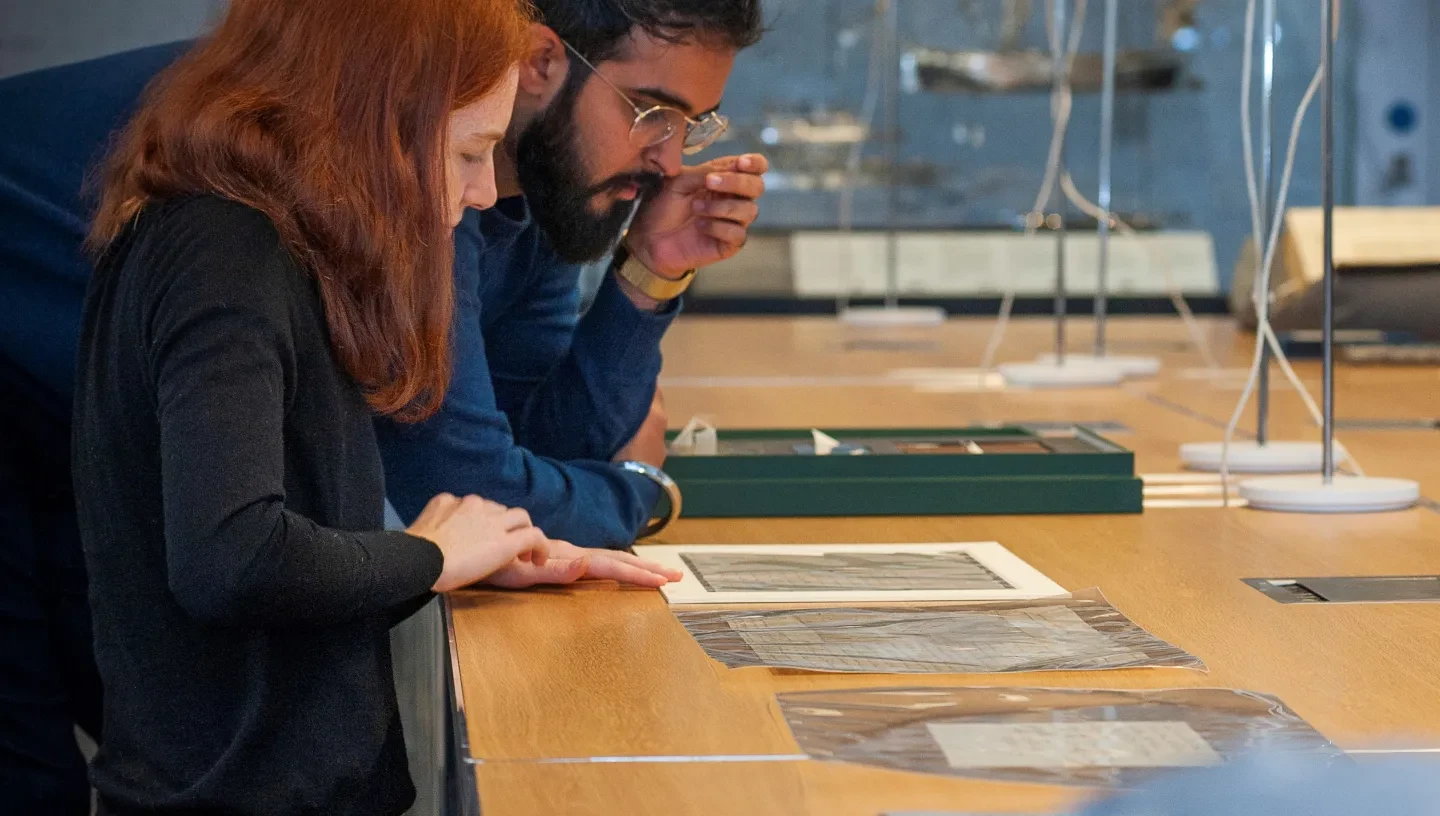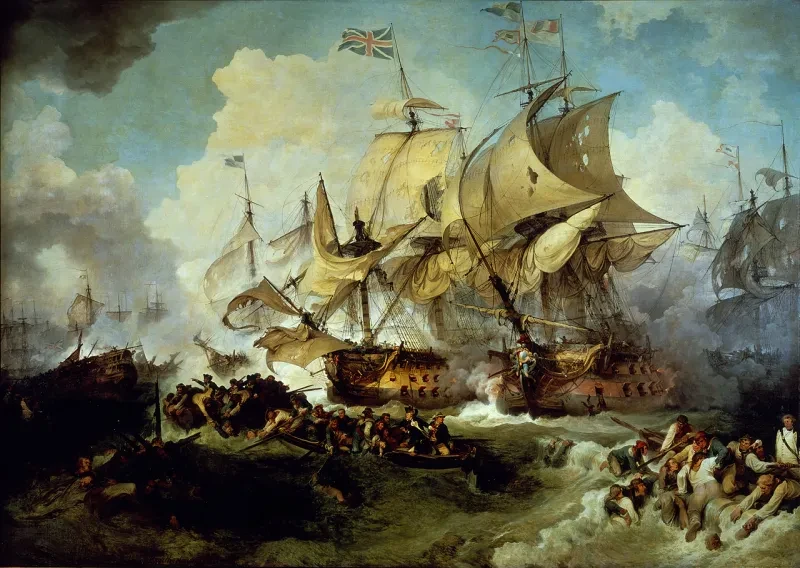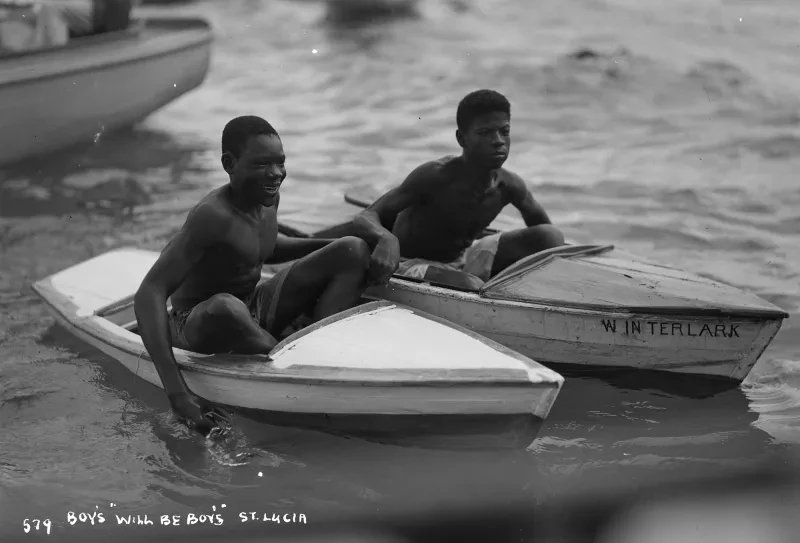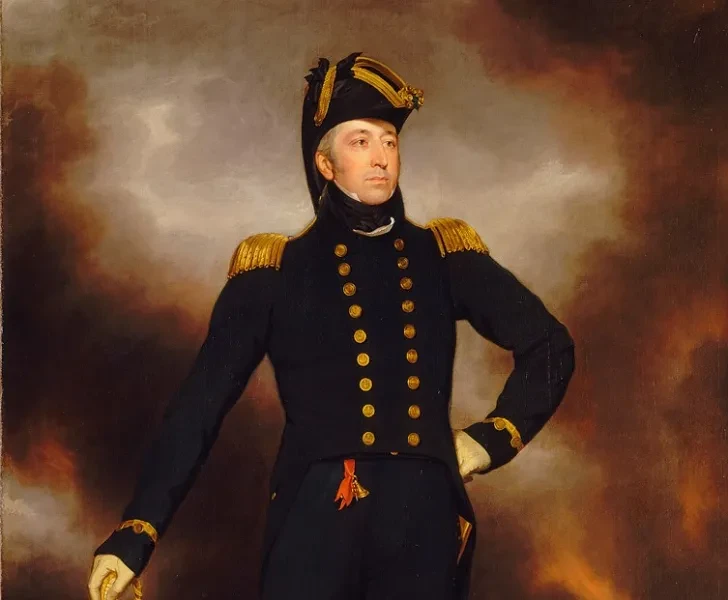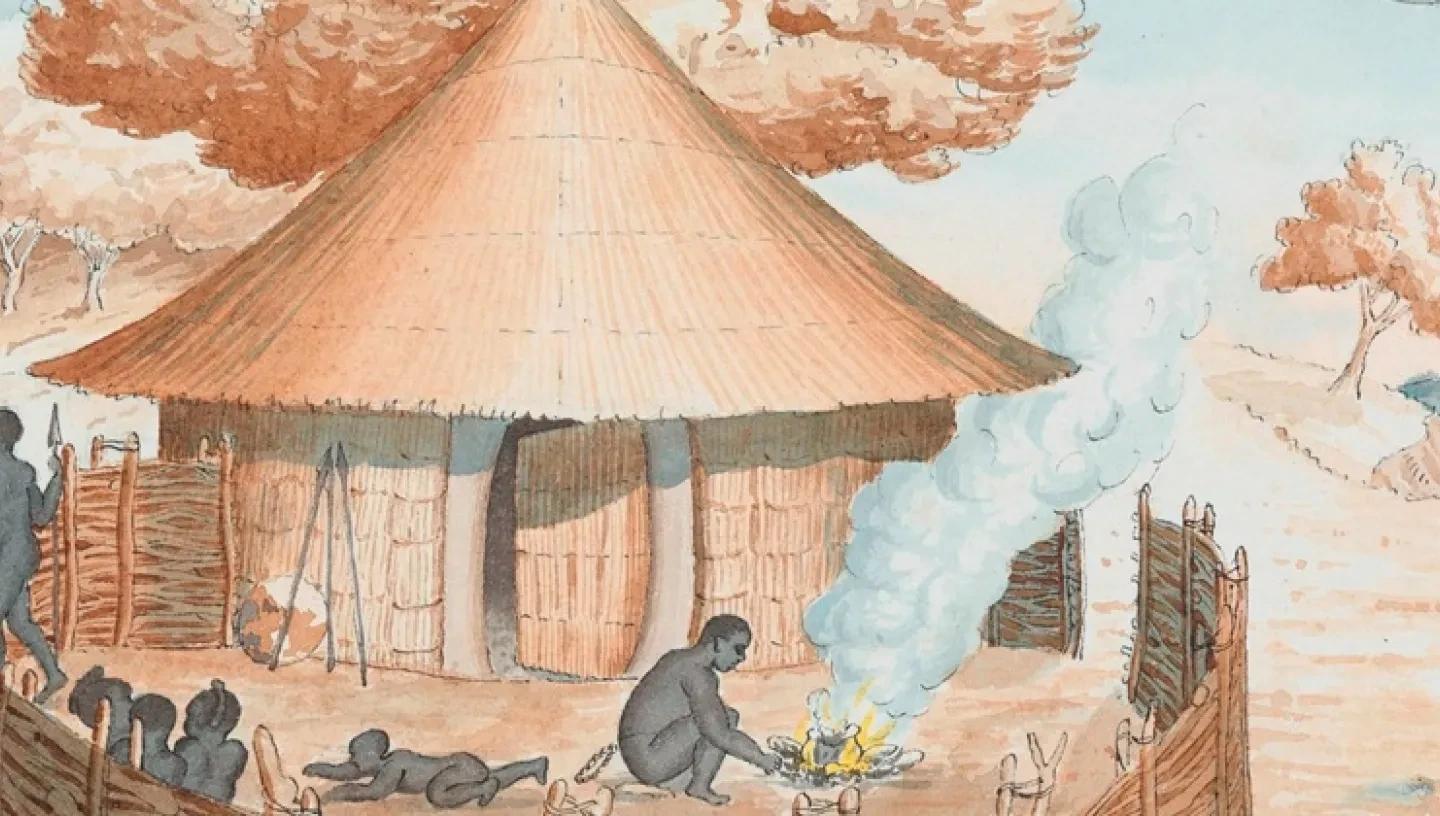
A Royal Navy officer's personal illustrated account of a long surveying voyage mapping the African coast, 1821-1826.
Boteler was appointed Second Lieutenant of the Leven under Captain William Fitz-William Owen, and later First Lieutenant of the Barracouta.
During a long surveying voyage between 1821 and 1826 to map parts of the coast of Africa, which hadn't been surveyed since the first wave of Portuguese explorers 300 years earlier, Boteler wrote a personal account of what he saw, and created many detailed and interesting drawings.
This blog aims to show some of the highlights from this collection of drawings, which I had the pleasure of cataloguing last year alongside a manuscript copy of the account.
Captain Owen's account of the same voyage was published in 1833 in two volumes with the title Narrative of voyages to explore the shores of Africa, Arabia, and Madagascar: performed in H.M. ships Leven and Barracouta, under the direction of Captain W.F.W. Owen, R.N. Boteler's account was published in 1835, also in two volumes, as Narrative of a voyage of discovery to Africa and Arabia, performed in His Majesty's ships, Leven and Barracouta, from 1821 to 1826, under the command of Capt. F. W. Owen, R.N.
The published editions of both these narratives contain monochrome illustrations. The illustrations in Boteler’s narrative are lithographic copies of original, sometimes beautifully vivid, ink and watercolour drawings, made by the author presumably at the time or very close to the time he saw the items and scenes depicted. Only four drawings are actually reproduced as lithograph plates in the published work, so it is very exciting to make 33 of Boteler’s original drawings accessible for readers in the Caird Library alongside the manuscript volume.
If you are interested in comparing the published illustrations with original drawings, the original versions of three of the four published plates have the following references:
BTL/2/1/16 - Frontispiece to Vol. 1: Women of St Mary’s Madagascar
BTL/2/1/25 - Frontispiece to Vol. 2: Fetiche Dance, Cape Lopez
BTL/2/1/26 - Page 423 of Vol. 2: Chief at Fernando Po
Unfortunately, we do not have the original drawing of the second plate in Volume 1, page 84, titled Hippopotamus Trap. The style of this particular illustration is rather different to the rest of Boteler’s work, so it may be by a different artist, which would explain its absence.
The narrative describes the survey of the east African coast, from the Cape Colony to Cape Gardafui on the Red Sea, with visits to Madagascar and the Seychelles. Melinde and Mombasa are also visited and described in some detail. Over 20,000 miles of coast were charted on this expedition. The illustrations I have featured here mostly relate to the early part of the voyage, from the Delagoa Bay region on the south-east coast of mainland Africa, where Boteler and others landed for some time, to St Mary, an island off the east coast of Madagascar now known as Nosy Boraha, or Île Sainte-Marie. This island is perhaps most famous in the English speaking world as a haven for pirates. Legendary pirates including William Kidd, Robert Culliford, Olivier Levasseur, Henry Every, Abraham Samuel and Thomas Tew lived in the île aux Forbans, an island located in the bay of Sainte Marie's main town, Ambodifotatra.
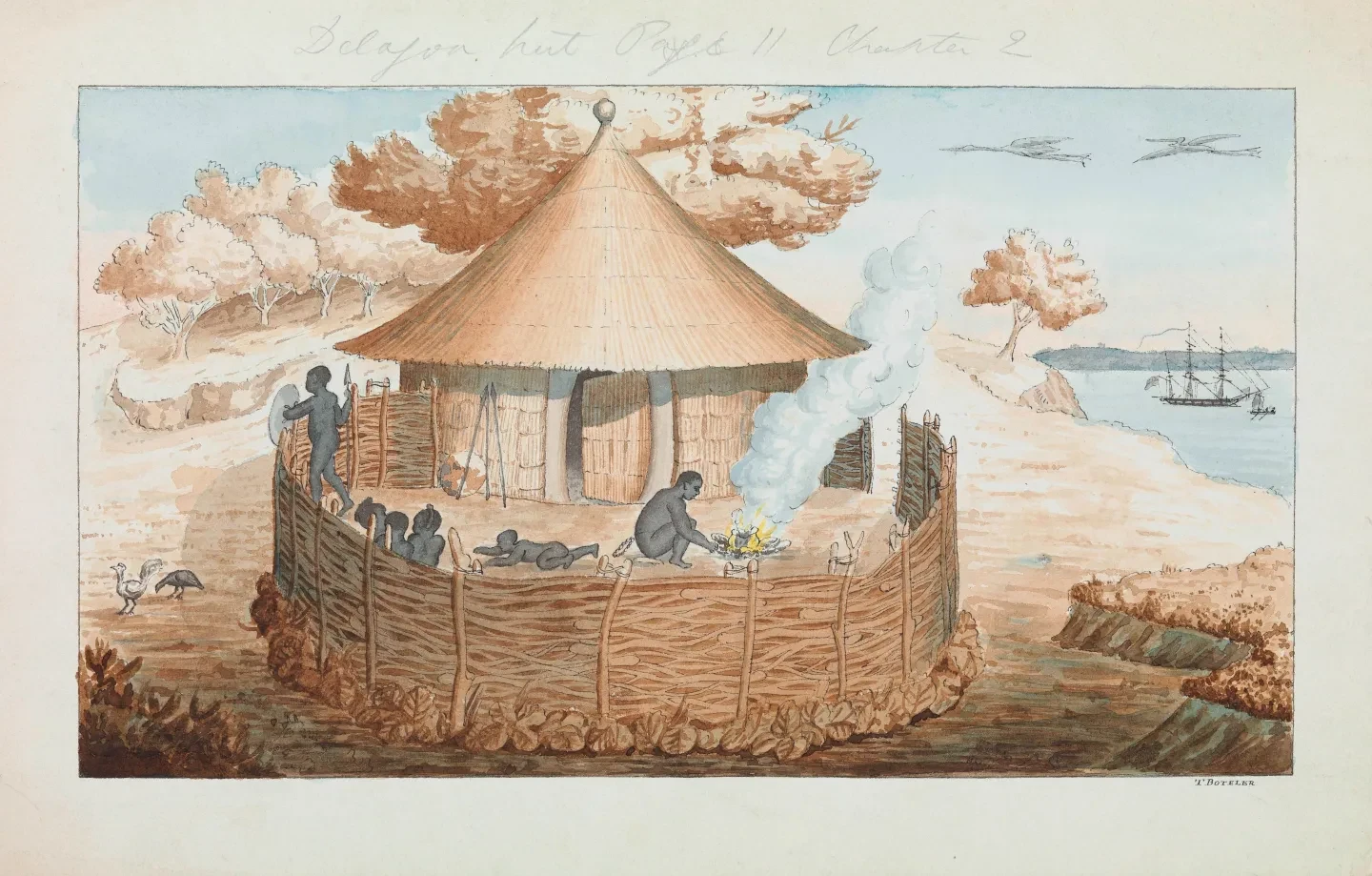
The first image in this post is of a watercolour and black ink drawing of a hut with a fenced courtyard on the coast at Delagoa. Inside the courtyard five individuals are depicted, one of whom is cooking over a fire. A survey vessel can be seen anchored in the distance. Delagoa is described by Boteler in Chapter 2 of the manuscript as the southernmost establishment of the Portuguese on the east coast of Africa. He describes this region in huge detail, and many of the surviving illustrations depict Delagoan people and their property such as homes, boats and utensils.
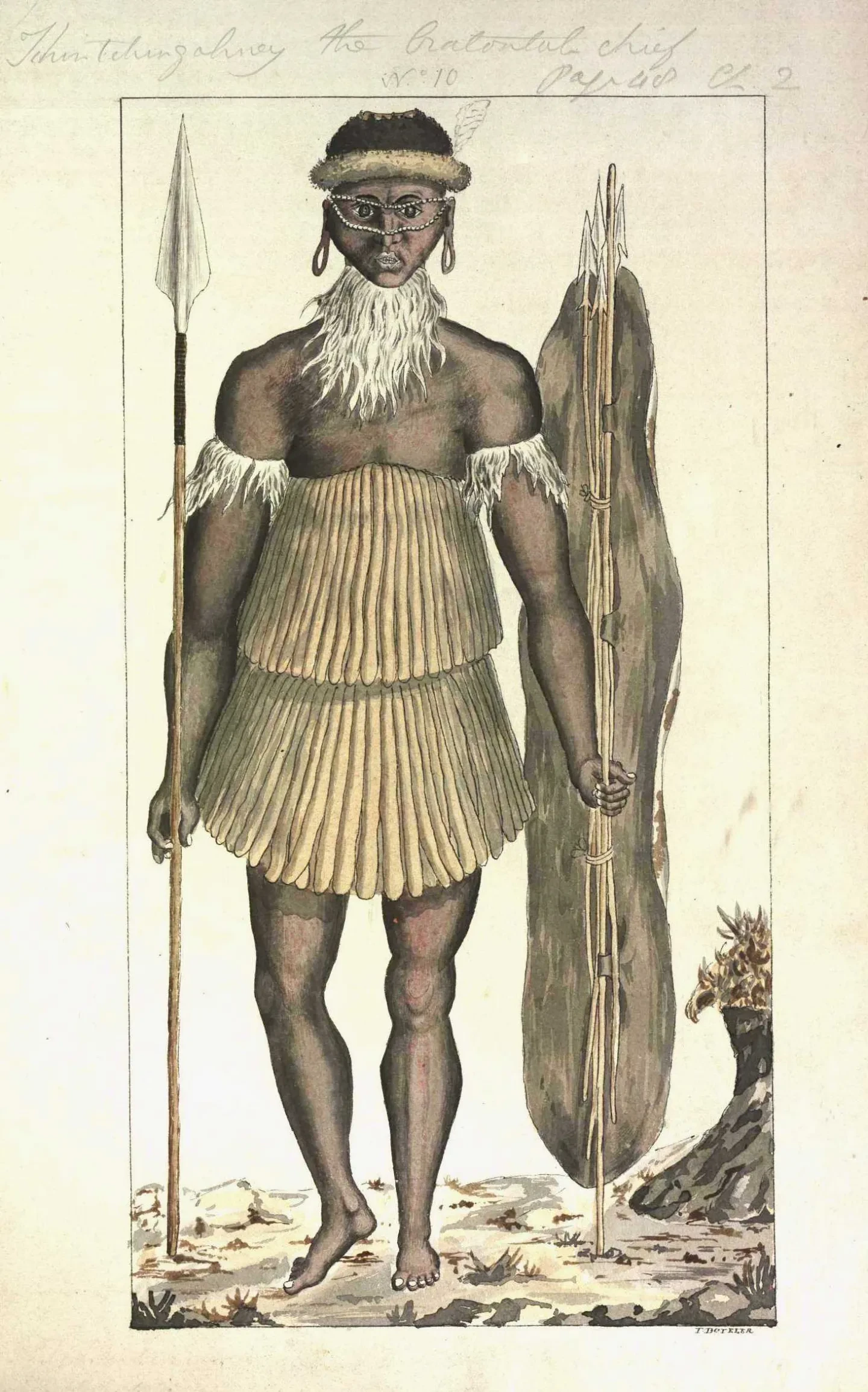
According to Boteler’s narrative, the Oratontah people were very fierce “banditti” who terrorized the native people of Delagoa. He explores the subject further in other drawings such as The misery of the Delagoan refugees (BTL/2/1/7) and Attack of the Oratontahs on our encampment at Delagoa (BTL/2/1/11). There is a very detailed description of this chief in the Narrative of the voyage of the Leven and Barracouta, on pages 46-50 (in the volume, the chief's name is sometimes spelled Chinchinganay). The same description appears in Volume 1, Chapter 3 of the published version.
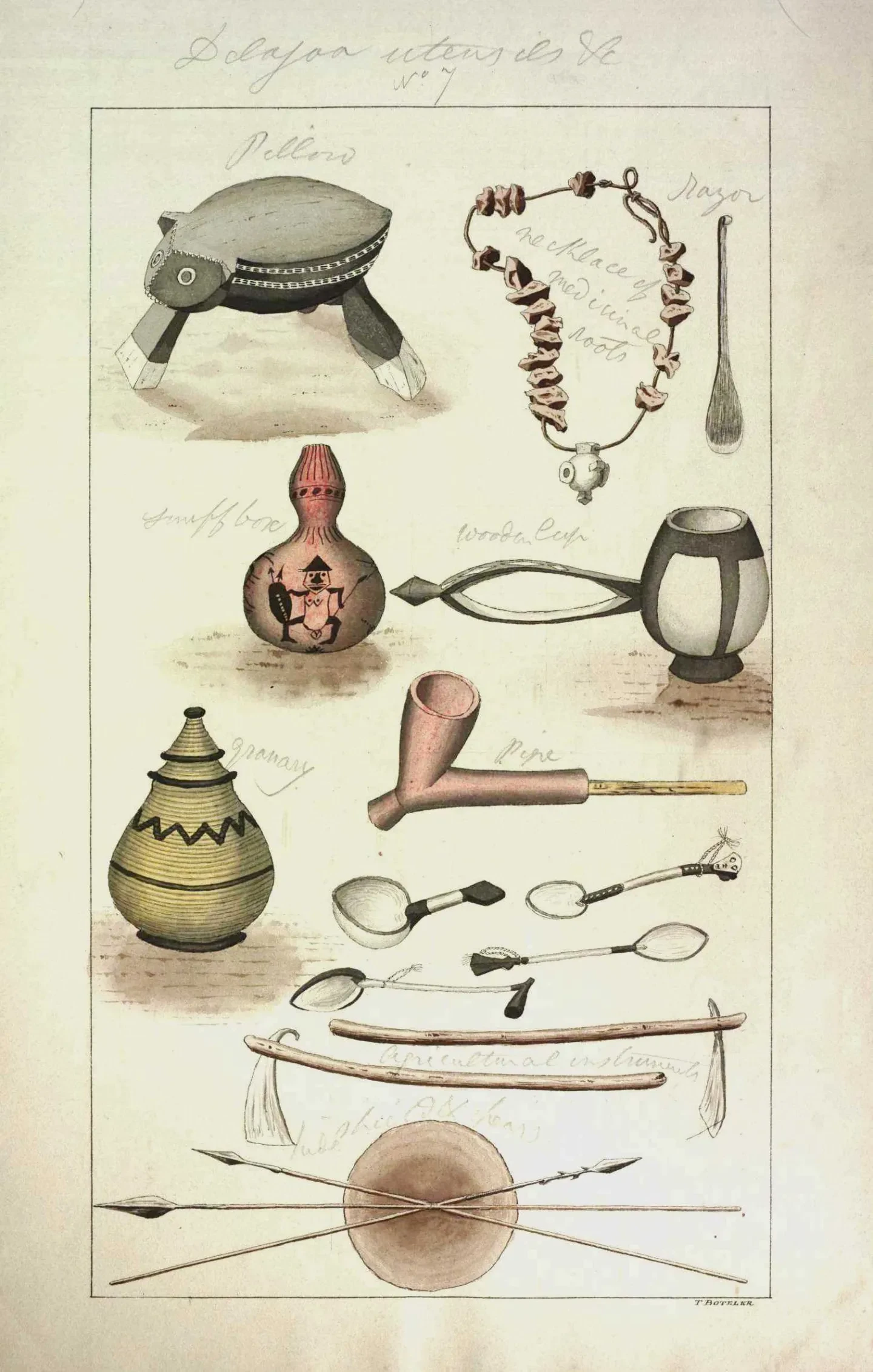
Watercolour and black ink drawing of articles from Delagoa Bay, including a headrest, necklace, razor, cup, pipe, spoons, granary, snuff box, agricultural tools and weapons. The necklace is made from “medicinal roots” and the main ornament in this example is possibly “piece of ivory hollowed out, to hold snuff or tobacco” (page 25, volume 1). The tobacco pipe is described as “the favourite luxury of both sexes at Delagoa” (page 27, volume 1).
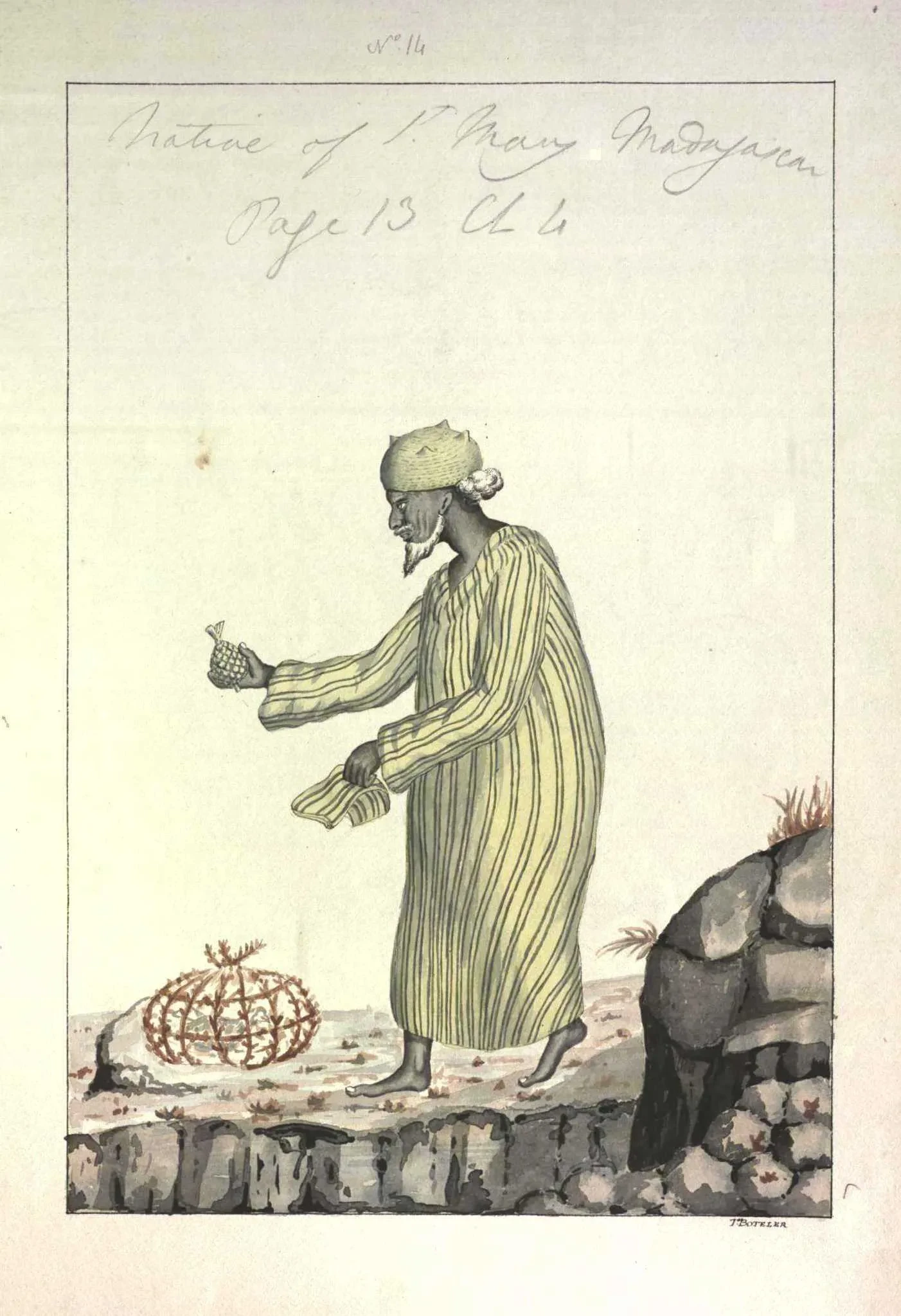
This image shows a watercolour and ink drawing of a man wearing a yellow-green hat and loose, striped garment, with a bird in a small cage. Oddly, the narrative seems to contain no description of the individual depicted here. The men of this region are described as wearing a simple piece of cloth wrapped around their hips, but the women’s clothes are described in more detail: “long-sleeved blue spencers fitting tight to the shape and ending just below the bosom, where the skin around the body for the breadth of an inch was left exposed, and then was succeeded by two pieces of cloth, one serving as a petticoat and the other as a gown”. The description of the men’s hats nearly matches the hat in the picture: “a basket of hemispherical shape, with three corners worked out of it on top, serving as legs for it to stand on when off the head” (both from page 145, volume 1).
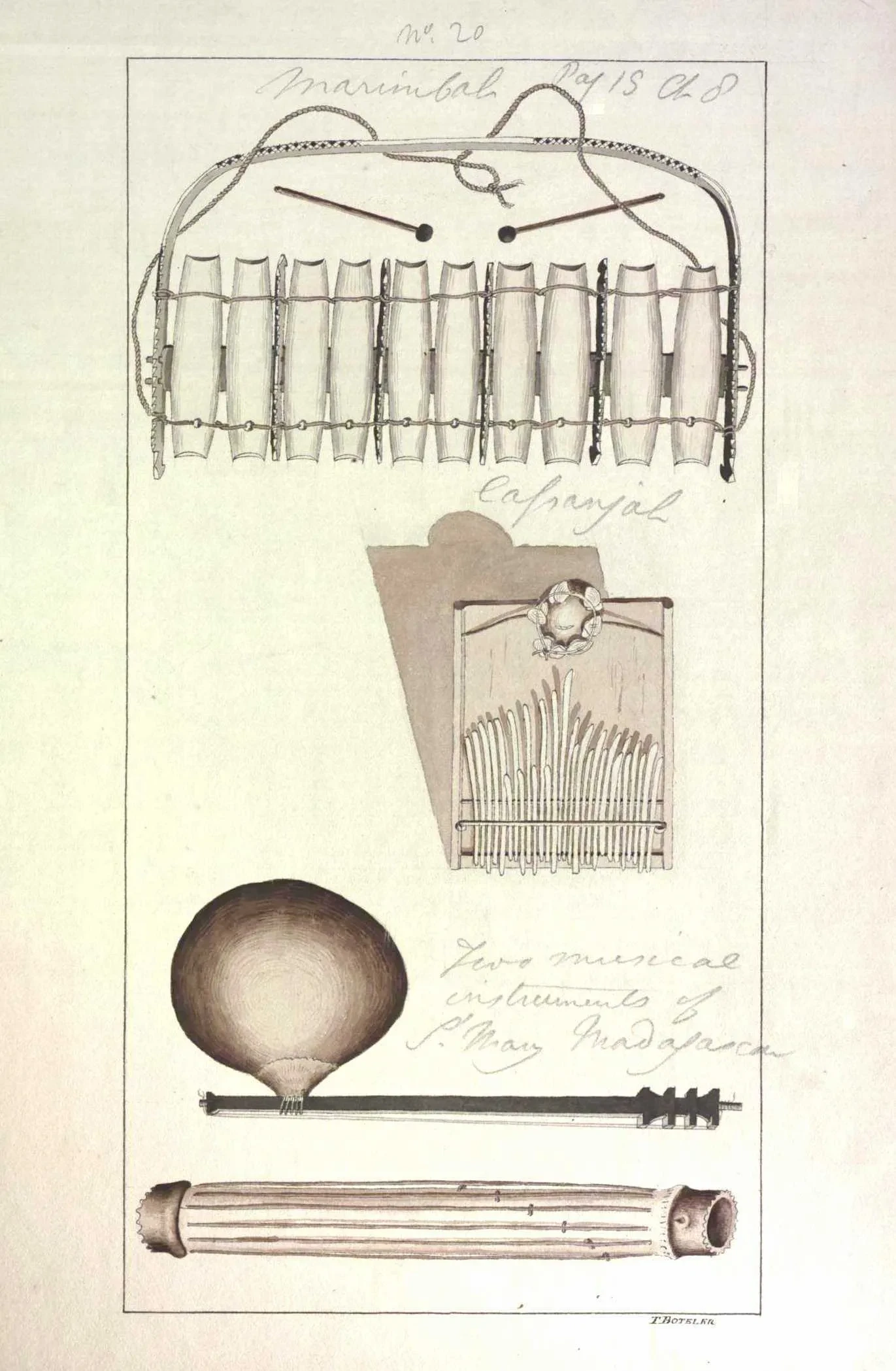
This image shows an ink and watercolour drawings of four musical instruments: top drawing is a percussive instrument, labelled "Marimbah" (clearly an ancestor of today’s marimba), the middle drawing is a thumb-piano labelled "Casanjah" (this is an approximate transcription of the pencil annotation – in the published work, the word becomes “kassanjah” in volume 1 and “kassangah” in volume 2), and the lower two drawings depict two musical instruments of Madagascar, one a kind of zither, the other a valiha, another stringed instrument. Boteler describes how they encountered the marimba and thumb-piano in many varied places on their voyage: “Among the musical instruments of the natives the marimbah holds first place. It is composed of ten pieces of wood, suspended in a frame The kassanjah is also a great favourite, we met with it everywhere; whereas the marimbah was only seen by us at Inhambane, Quilimane and Delagoa; the latter of which places it is termed tabbelah” (volume 1, page 332).
